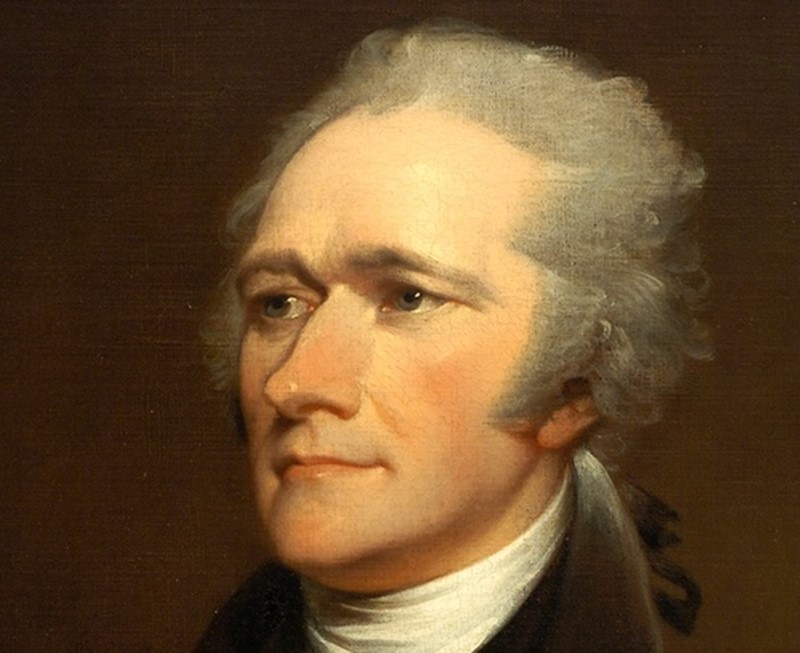
Alexander Hamilton was born in 1757 on the Caribbean island of Nevis or St. Kitts to Rachel Fawcett and James Hamilton, but he spent the majority of his youth on the island of St. Croix. His formal education as a child was minimal. When his mother died in 1768, Hamilton took his first job as a Clerk in the offices of merchant Nicholas Cruger, keeping Cruger's business records, and coordinating business efforts between the merchant ship captains, government officials, and planters. Cruger and a local Presbyterian Minister, Reverend Hugh Knox, recognized Hamilton's genius and arranged for him to leave St. Croix for New York City. Alexander left the island in 1772, never to return again.
In New York, Hamilton attended several preparatory academies and schools to prepare himself for college. He enrolled in King's College, which is now known as Columbia. In 1776, Hamilton withdrew from King's College and joined a local New York militia to fight in the American Revolution against the British. During his first year of service, Hamilton served as an artillery captain, but quickly moved up in the ranks and eventually became one of General George Washington's military aides. Hamilton spent four years as Washington's attaché and participated in several battles, including the Battle of Yorktown and the Battle of Monmouth.
Hamilton left the military in 1781. He had recently married Betsey Schuyler, and worked diligently for several months to pass the New York bar exam. He served as one of New York's most prominent lawyers in the early 1780s, and also began his political career, serving first as a national tax agent, and then as one of New York's representatives at the national Congress in Philadelphia.
In 1786, Hamilton was chosen to represent New York State at a national convention held in Annapolis, Maryland, to amend the Articles of Confederation. When only a few of the delegates from the other states bothered to attend, Hamilton called for a second convention to be held in Philadelphia in 1787. This time, the delegates took the invitation more seriously, and created the outline for a new government by drafting the Constitution.
He believed the Constitution was a step in the right direction, and also believed that if it was not approved, the entire union could collapse. With this in mind, Hamilton returned to New York, where he published a series of essays to encourage the people of New York to ratify the Constitution. Hamilton co-authored the essays with John Jay and James Madison under the pseudonym "Publius," and the collection came to be known as the Federalist Papers. The essays succeeded in convincing Americans to ratify the Constitution.
When George Washington became the first President of the United States in 1790, he selected Alexander Hamilton to be his first Secretary of the Treasury. Although Hamilton served in Washington's cabinet for only five years, many historians regard him as the greatest and most influential Secretary of the Treasury in U.S. history. As Secretary, Hamilton wrote five key reports that established American economic policy. Hamilton also wrote the prophetic "On the Subject of Manufacture"s, which argued that the United States should shift the bulk of its economy from agriculture to industry.
In 1804, Hamilton wrote a series of essays against another rival, Aaron Burr that was partly responsible for Burr's loss in that year's New York gubernatorial race. Burr blamed Hamilton for his loss and challenged Hamilton to a duel in which he shot Hamilton. Hamilton died the next day on July 11, 1804, at the age of forty-seven. He was buried in Trinity Churchyard in New York City.
Sources:
http://www.sparknotes.com/biography/hamilton/summary.html
http://teachingamericanhistory.org/static/convention/delegates/hamilton.html


